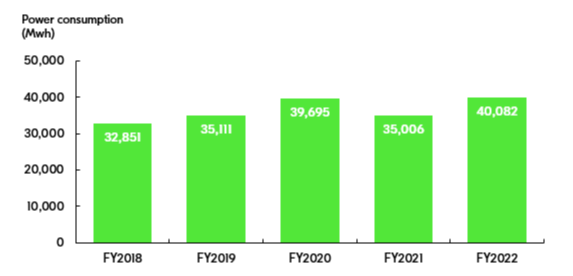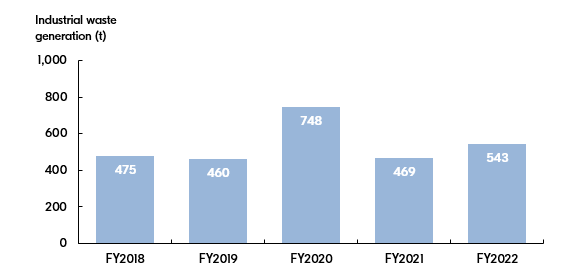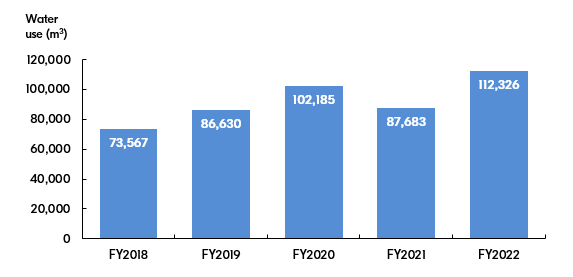Home > Sustainability > Tamaki Plant (Mie, Japan) > Environmental Activities and Results
Environmental Activities and Results
We are working hard to conserve the environment, including reducing greenhouse gas emissions and making effective use of resources, in order to coexist harmoniously with society, our global community and nature ("Living Together").
FY 2022 Targets and Results
| Category | FY 2022 Targets | FY 2022 Results |
|---|---|---|
Energy use |
Improve energy use per unit by more than 2% year-on-year |
Improved 12.6% |
CO2 emissions |
Implement measures to reduce 56 [t-CO2] |
Reduced 68 [t-CO2] |
Industrial waste generation |
Implement reduction measures equivalent to 1% of the previous year's amount per unit |
Implemented reduction measures equivalent to 2,360 [kg] |
Water use |
Implement reduction measures equivalent to 1% of the previous year's amount per unit |
Implemented reduction measures equivalent to 629 [m3] |
Implement measures to reduce plastic usage |
Implement 1 measure to reduce plastic usage |
|
Energy Conservation Efforts
In June 2019, we installed 2,814 solar panels on the roof of the plant No.5 with the aim of reducing CO2 emissions to prevent global warming.
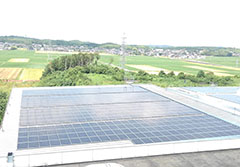
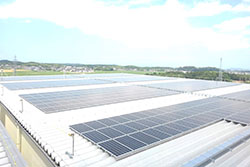
● Historical Power Consumption Data
Efforts to Reduce Industrial Waste
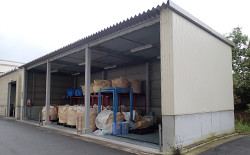
We set a reduction target every year to minimize the amount of industrial waste we generate. Since FY 2013, we have been recycling waste toner (not fit for commercialization) generated during production and have increased the recycling rate to over 80%. We also recycle more than 80% of waste plastics as the plastics raw material by carefully separating them from other waste.
● Historical Industrial Waste Generation Data
Efforts to Reduce Water Use
We acquire the pure water needed for toner production by treating city water and well water with a pure water system. Since the system only purifies 60% of the water so we used to drain the remaining 40% as wastewater. We installed a wastewater reuse system.
● Historical Water Use Data
See below for the plant's other FY 2022 environmental data.
FY 2023 Targets
| Category | FY 2023 Targets |
|---|---|
Greenhouse gas emissions |
18,156 [t-CO2](Reduced 4% compared with FY2022) |
Industrial waste generation |
Implement reduction measures equivalent to 1% of the previous year's amount per unit |
Water use(Process water) |
Implement reduction measures equivalent to 1% of the previous year's amount per unit |
Continuation of zero emission |
|
Implement measures to reduce plastic usage |
|
Home > Sustainability > Tamaki Plant (Mie, Japan) > Environmental Activities and Results

